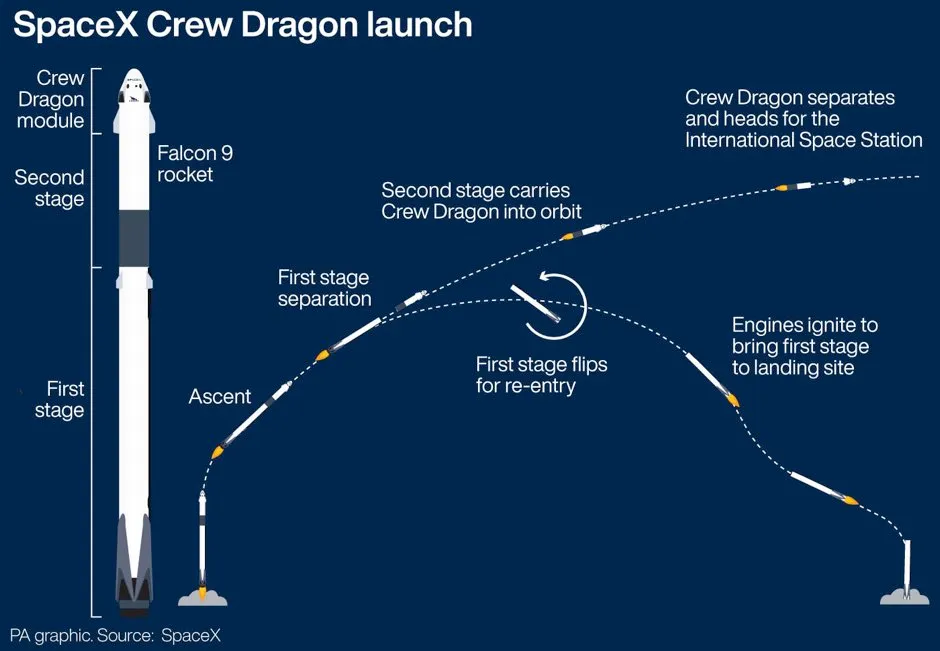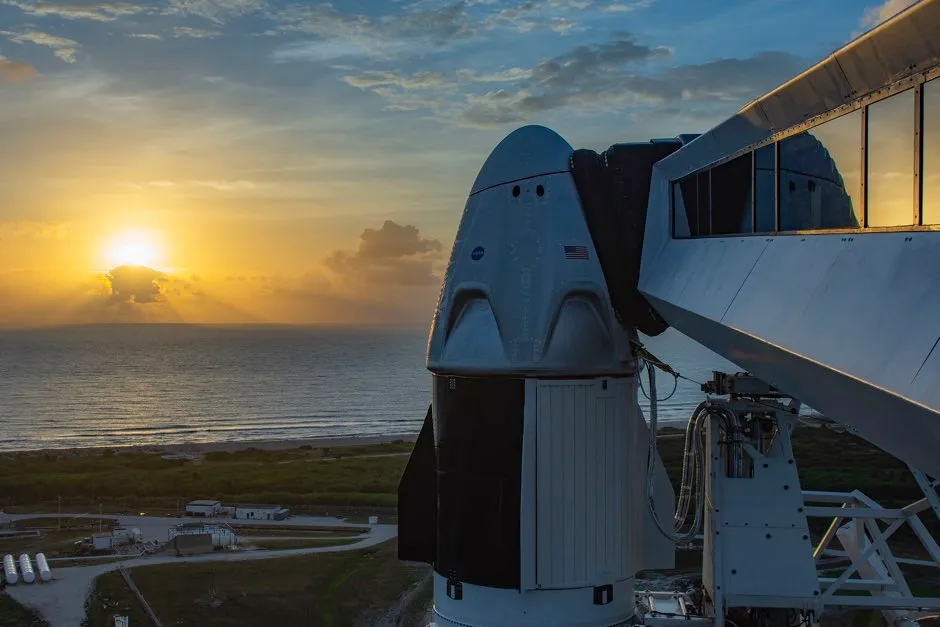The joint effort by NASA and SpaceX to send astronauts into space from the US is “a major milestone” for the global space industry, a leading space expert in the UK has said.
Robert Behnken and Douglas Hurley are on course to make history on Wednesday as they travel to the International Space Station (ISS) on a rocket built by billionaire entrepreneur Elon Musk’s firm.
If all goes as planned, the mission, named Demo-2, will see SpaceX become the first private company to send astronauts into space.
It will also be the first time in nine years astronauts will have launched into space from US soil.
Read more about SpaceX:
- Everything you need to know about Elon Musk's controversial satellite constellation SpaceX Starlink
- How does SpaceX Falcon compare to other rockets?
- What is the environmental impact of the SpaceX Falcon Heavy launch?
Libby Jackson, human exploration programme manager at the UK Space Agency, said the work done by SpaceX and NASA is not only a huge stepping stone for the US but also a “major milestone for the global space sector”.
She told the PA news agency: “We have been dependent on just a single way of getting to and from this amazing scientific laboratory we have up there.
“To reinstate what we call dissimilar redundancy – a different way of getting to and from the space station – would be very significant for the future of the space station.”
She added that the mission opens up a new era where space agencies are becoming more open to commercialisation and space tourism, saying it is “indeed where I see some of this heading”.

Since ending its Space Shuttle programme in 2011, NASA has depended on Russia’s space agency Roscosmos to transport its astronauts to the space station.
In 2014, NASA awarded SpaceX and Boeing contracts to provide crewed launch services to the space station as part of its Commercial Crew Programme.
According to the US space agency, this is a demonstration mission which, if successful, will allow SpaceX to take part in more crewed missions.
SpaceX’s Falcon 9 rocket will take off from the launchpad 39A at the Kennedy Space Centre in Florida, carrying the Crew Dragon spacecraft where Behnken, 49, and Hurley, 53, will be seated.
Behnken will serve as the mission’s joint operations commander and take responsibility for the rendezvous, docking and undocking of the Dragon capsule, while Hurley will be in charge of the launch, landing and recovery of the vehicle in his role as the Crew Dragon spacecraft commander.

Ms Jackson told PA: “It’s going to be a 10-minute ride into space. After about two minutes, the rocket will separate into what is called a first stage and a second stage.”
The first stage will return to a SpaceX landing ship which will be stationed in the Atlantic Ocean off the coast of Florida, while the second part of the rocket continues the journey with the Crew Dragon capsule.
Once in orbit, the capsule will separate from the second stage and travel at around 17,000mph before being in a position to rendezvous, and dock, with the space station 24 hours later.
Read more about space exploration:
- Successful space rocket test first in UK for a generation
- Amazon and Tesla bosses battle for NASA Moon contract
- 6 out-of-this-world experiments recreating space on Earth
Ms Jackson told PA: “The crew will dock at the front of the space station and we expect to see that on Thursday afternoon.
“Then, about an hour and a half later the hatch will open and the crew will arrive on the space station.”
The astronauts will join the three other space station residents – NASA’s Chris Cassidy and Russia’s Anatoli Ivanishin and Ivan Vagner – to become members of the Expedition 63 crew.
The mission is expected to last anything between one and four months where they will perform further tests on the Crew Dragon.
Reader Q&A: Why can’t we fly planes into space?
Asked by: Dennis Robertson, Sheffield
Planes can and have flown into space for over 50 years – though not the kind you see at the airport. That’s because conventional planes need air for both propulsion and lift, and space is essentially a vacuum.
The first plane to reach space was the X-15, designed in the mid-1950s for the US National Advisory Committee for Aeronautics (NACA), forerunner of NASA. It made its first flight in June 1959, using thin, stubby wings for generating lift and stability while travelling at over five times the speed of sound, plus a revolutionary form of rocket motor whose power output could be varied like a conventional aircraft engine.
In 1963, an X-15 using a propellant of oxygen and ethyl alcohol reached an altitude of over 100km, widely recognised as the altitude at which space begins. The lessons learned were fed into the Space Shuttle programme and today’s commercial spaceplane ventures like Virgin Galactic.
Read more:
